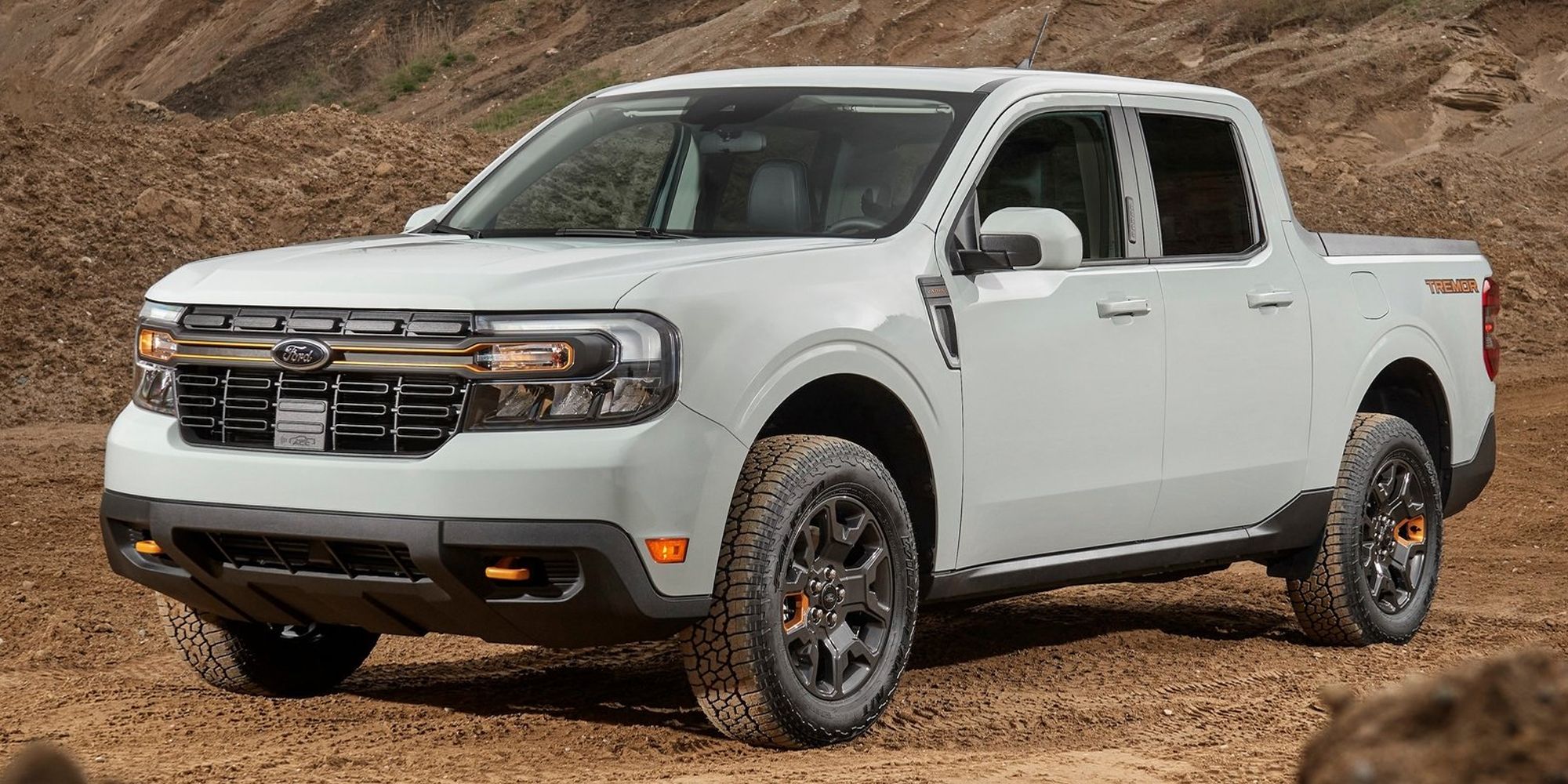Is Ford F Standard Cab For Tall Driver? A Comprehensive Guide to Comfort and Space
Is Ford F Standard Cab For Tall Driver? A Comprehensive Guide to Comfort and Space cars.truckstrend.com
For individuals blessed with above-average height, finding a vehicle that offers ample space and comfort isn’t just a luxury; it’s a necessity for long-term driving enjoyment and health. The Ford F-Series, America’s best-selling truck for decades, is renowned for its versatility, capability, and robust design. However, a common question among taller prospective buyers is: "Is the Ford F-Series standard cab (often referred to as ‘Regular Cab’) suitable for a tall driver?"
This article will delve deep into the ergonomics, dimensions, and practical considerations of the Ford F-Series Regular Cab, offering a comprehensive guide to help tall drivers determine if this iconic truck configuration can truly accommodate their needs. We’ll explore what "standard cab" entails, examine key comfort factors, compare it to other cab options, and provide actionable advice for maximizing your driving experience.
Is Ford F Standard Cab For Tall Driver? A Comprehensive Guide to Comfort and Space
Understanding the Ford F-Series "Standard Cab"
Before addressing the tall driver’s dilemma, it’s crucial to understand what the "standard cab" or "Regular Cab" (RC) signifies within the Ford F-Series lineup. Unlike its larger siblings, the SuperCab (Extended Cab) and SuperCrew (Crew Cab), the Regular Cab is characterized by a single row of seating, typically accommodating two or three occupants across a bench or bucket seats, with no rear doors or dedicated rear passenger space.
The Regular Cab design prioritizes a shorter wheelbase, often making it more maneuverable, lighter, and typically the most affordable entry point into the F-Series family. It’s frequently chosen by individuals who primarily need a work truck, don’t regularly transport more than one passenger, or prefer the classic truck aesthetic. The focus of its interior space is squarely on the front occupants.
Key Ergonomic Factors for Tall Drivers
When evaluating any vehicle for tall drivers, several ergonomic factors come into play, directly impacting comfort, posture, and even safety. For the Ford F-Series Regular Cab, these are paramount:
- Headroom: The vertical space from the seat cushion to the ceiling. Tall drivers often struggle with their head brushing the headliner, especially when wearing hats or helmets.
- Legroom: The horizontal space available for legs, from the seat to the pedals and dashboard. Adequate legroom prevents knees from hitting the dash or steering column and allows for proper leg extension.
- Seat Adjustability: This is multifaceted:
- Fore/Aft Travel: How far the seat can slide back on its rails. More travel means more legroom.
- Height Adjustment: The ability to raise or lower the seat. Lowering the seat can increase headroom, while raising it can improve visibility for some.
- Recline: The angle of the seatback. A good recline angle supports the back and allows for a comfortable driving posture.
- Lumbar Support: Adjustable lumbar support can significantly improve long-term comfort by supporting the lower back’s natural curve.

- Steering Wheel Adjustability:
- Tilt: The ability to move the steering wheel up and down.
- Telescopic: The ability to move the steering wheel closer or further from the driver. Both are crucial for finding an optimal driving position that doesn’t force arms to be overly extended or cramped.

- Pedal Placement & Adjustability: The distance and angle of the accelerator, brake, and clutch (if manual) pedals. Some vehicles offer power-adjustable pedals, which can be a game-changer for drivers with long legs, allowing them to optimize their foot position relative to the seat.
- Entry/Exit: The ease with which a tall driver can get in and out of the vehicle without hitting their head or contorting their body.

Ford F-Series Standard Cab: Dimensions and Reality for Tall Drivers
So, how does the Ford F-Series Regular Cab stack up against these criteria? The F-150 (and to a lesser extent, the Super Duty F-250/350 Regular Cabs) generally offer a surprisingly generous amount of front-seat space for their configuration, especially in more recent generations.
- Headroom: Ford F-Series Regular Cabs typically offer competitive headroom. While exact measurements vary by model year and trim (e.g., whether it has a moonroof), most Regular Cab F-150s provide ample headroom for drivers up to 6’3" to 6’5". Taller individuals might find it snug, particularly if they prefer a more upright seating position or if the truck is equipped with a moonroof (which inherently reduces headroom).
- Legroom: This is where the F-Series Regular Cab truly shines for front occupants. Because there’s no rear seat to accommodate, Ford engineers can push the front seat rails further back, maximizing forward seat travel. Many tall drivers report excellent legroom, allowing for good leg extension and preventing knees from hitting the dashboard. This often makes the Regular Cab surprisingly comfortable for leg space, even compared to some larger SUVs or sedans.
- Seat Adjustability: Modern F-Series trucks, even in Regular Cab configurations, offer a good range of seat adjustments.
- Fore/Aft Travel: As mentioned, this is generally excellent.
- Height Adjustment: Most trims offer manual or power height adjustment, allowing drivers to fine-tune their position relative to the roof and steering wheel.
- Recline: Standard recline functionality is present, allowing for comfortable back support.
- Lumbar Support: Available on many trims, crucial for long drives.
- Steering Wheel Adjustability: Most F-Series models come with a tilt and telescopic steering wheel, which is a major advantage for tall drivers. This allows them to position the wheel optimally without compromising legroom or arm extension.
- Pedal Placement & Adjustability: Ford has been a leader in offering power-adjustable pedals, often standard or optional on various F-Series trims. This feature is invaluable for tall drivers, allowing them to move the pedals closer or further away, preventing an overly bent knee or stretched-out foot position.
The Reality: For many tall drivers, particularly those in the 6’0" to 6’5" range, the Ford F-Series Regular Cab can be surprisingly comfortable. The emphasis on front-row space means that while you sacrifice rear passenger capacity, you gain in front-seat legroom and often adequate headroom, especially with proper seat and steering wheel adjustments.
Standard Cab vs. Extended/Crew Cabs: A Space Comparison
While this article focuses on the Regular Cab, it’s helpful to briefly compare it to the SuperCab and SuperCrew for front-seat comfort.
- SuperCab (Extended Cab): Offers a small rear seating area with suicide doors. While it provides more overall interior volume, the front-seat legroom and seat travel are often similar to the Regular Cab. Headroom might also be comparable. The primary difference is the added, albeit cramped, rear space.
- SuperCrew (Crew Cab): The largest cab option with four full-sized doors and generous rear passenger space. Interestingly, due to the need to balance front and rear legroom, the maximum front-seat legroom and seat travel in a SuperCrew can sometimes be slightly less than in a Regular Cab, though often still very good. The main advantage of the SuperCrew is obviously its abundant rear passenger comfort.
For a tall driver whose primary concern is their own front-seat comfort and legroom, the Regular Cab often stands shoulder-to-shoulder with (and sometimes even surpasses in terms of pure leg stretch) its larger siblings, specifically because there’s no compromise for rear passengers.
Maximizing Comfort: Tips and Strategies for Tall Drivers
If you’re a tall driver considering a Ford F-Series Regular Cab, here are some practical tips:
- Thorough Test Drive: This is non-negotiable. Spend at least 20-30 minutes driving the specific Regular Cab model you’re interested in. Adjust everything – seat height, recline, fore/aft, steering wheel tilt/telescope, and power pedals (if equipped). Try various driving positions you might use on a long trip.
- Explore Different Trim Levels: Higher trim levels (e.g., Lariat, King Ranch, Platinum) often come standard with more advanced power seats (more adjustments, memory settings) and power-adjustable pedals, which are critical for tall drivers.
- Optimize Seat Position:
- Slide Back First: Push the seat as far back as it goes.
- Lower Seat: If headroom is an issue, try lowering the seat as much as possible.
- Recline Slightly: A slight recline can increase perceived headroom and legroom.
- Adjust Lumbar: Find the sweet spot for lower back support.
- Utilize Steering Wheel Adjustments: After setting your seat, bring the steering wheel to you (telescope) and adjust its height (tilt) so your arms are comfortably bent and your knees don’t hit the column.
- Consider Aftermarket Solutions (with Caution): While generally not recommended due to safety implications and airbag sensor interference, some companies offer seat rail extenders. Always consult with a professional and understand the potential risks to safety and warranty before modifying seating components.
- Assess Entry/Exit: Practice getting in and out several times. Is it graceful or a struggle? This matters for daily usability.
Potential Challenges and Solutions
While the Regular Cab can be surprisingly accommodating, there are a few challenges inherent to its design:
- Limited Interior Storage: With no rear seats, interior storage behind the front seats is minimal. Solutions include under-seat organizers, seat-back organizers, or a small storage box on the floor.
- No Rear Passenger Capacity: This is the obvious trade-off. If you regularly carry more than one passenger, a SuperCab or SuperCrew is essential.
- Getting In/Out Gracefully: The lack of a B-pillar behind the front seats in some designs, combined with the truck’s height, can make entry/exit a bit awkward for some tall individuals. Running boards or side steps are highly recommended to ease entry/exit.
Estimated Pricing for Ford F-150 Regular Cab Configurations (2023/2024 Model Year Reference)
It’s important to clarify that "standard cap" is not an optional add-on with a separate price; it refers to the Regular Cab body style itself. The Regular Cab is typically offered on the more utilitarian and entry-level trims of the Ford F-150, making it the most affordable F-150 configuration. Prices vary significantly based on model year, engine choice, drivetrain (2WD vs. 4WD), and specific optional packages.
Here’s an estimated range for starting MSRPs of new Ford F-150 Regular Cab models for recent model years (e.g., 2023/2024), illustrating typical configurations:
| Configuration (Regular Cab) | Typical Engine | Drivetrain | Estimated Starting MSRP (USD) | Notes |
|---|---|---|---|---|
| XL (Base Trim) | 3.3L V6 | 2WD | $36,500 – $39,000 | Most basic, work-oriented. Often comes with a bench seat. |
| XL (Base Trim) | 3.3L V6 | 4WD | $40,000 – $43,000 | Adds 4×4 capability. |
| XLT | 3.5L EcoBoost / 5.0L V8 | 2WD | $42,000 – $45,000 | Mid-range trim, offers more features and comfort options (e.g., power seats, better infotainment). |
| XLT | 3.5L EcoBoost / 5.0L V8 | 4WD | $45,500 – $48,500 | XLT with 4×4. |
- Note: These are starting MSRPs and can increase significantly with added options, packages (e.g., FX4, Tow Packages), higher-tier engines (like the 5.0L V8 or 3.5L EcoBoost if not standard on XLT), and dealer markups. The Regular Cab is generally not available in higher luxury trims like Lariat, King Ranch, Platinum, or Limited, which are exclusive to SuperCab and SuperCrew configurations.
Frequently Asked Questions (FAQ)
Q1: Is the F-150 Regular Cab suitable for someone 6’5" or taller?
A1: Potentially, yes. Many drivers in the 6’5" range find the F-150 Regular Cab surprisingly comfortable due to excellent legroom and good seat adjustability. However, headroom can become a tighter squeeze, especially if a moonroof is present. A thorough test drive is absolutely essential.
Q2: Do all F-Series trucks offer adjustable pedals?
A2: No, not all. Power-adjustable pedals are typically an optional feature or standard on higher trim levels (XLT and above) for the F-150 and Super Duty. They are less common on base XL work trucks. Always check the specific trim and options package.
Q3: Can I put a taller seat in my F-150 Regular Cab?
A3: Modifying factory seating components is generally not recommended due to safety implications (e.g., airbag deployment, crash safety standards, seatbelt fit) and potential warranty voiding. If you’re considering aftermarket seats or rail extenders, consult a professional and understand the significant risks involved. Optimizing the factory seat’s adjustments is the safest first step.
Q4: Is there enough storage in a Regular Cab for long trips?
A4: Interior storage is limited. While there’s typically space behind the seat for small items like jackets or a backpack, large suitcases or extensive gear will need to go in the truck bed. Consider a bed cover or toolbox for secure storage.
Q5: Which F-Series cab is best for tall drivers if I also need rear seats?
A5: If you need to regularly transport rear passengers, the SuperCrew (Crew Cab) is generally the best option. While its front-seat legroom might be slightly less than a Regular Cab’s maximum extension, it still offers excellent front comfort combined with spacious rear seating.
Conclusion
The Ford F-Series Regular Cab, often overlooked by those picturing cramped work trucks, can indeed be a surprisingly comfortable and practical choice for many tall drivers. Its design philosophy, which dedicates nearly all interior space to the front occupants, translates into generous legroom and highly adjustable seating. While headroom might be the primary constraint for the very tallest individuals, and interior storage is limited, the Regular Cab’s combination of front-seat comfort, maneuverability, and often more attractive price point makes it a compelling option.
Ultimately, the best way for a tall driver to assess the Ford F-Series Regular Cab is to experience it firsthand. A comprehensive test drive, focusing on all available adjustments and an extended period behind the wheel, will provide the most accurate answer to the question: "Is the Ford F Standard Cap For Tall Driver?" For many, the answer will be a resounding yes, proving that comfort doesn’t always require the largest cab configuration.






